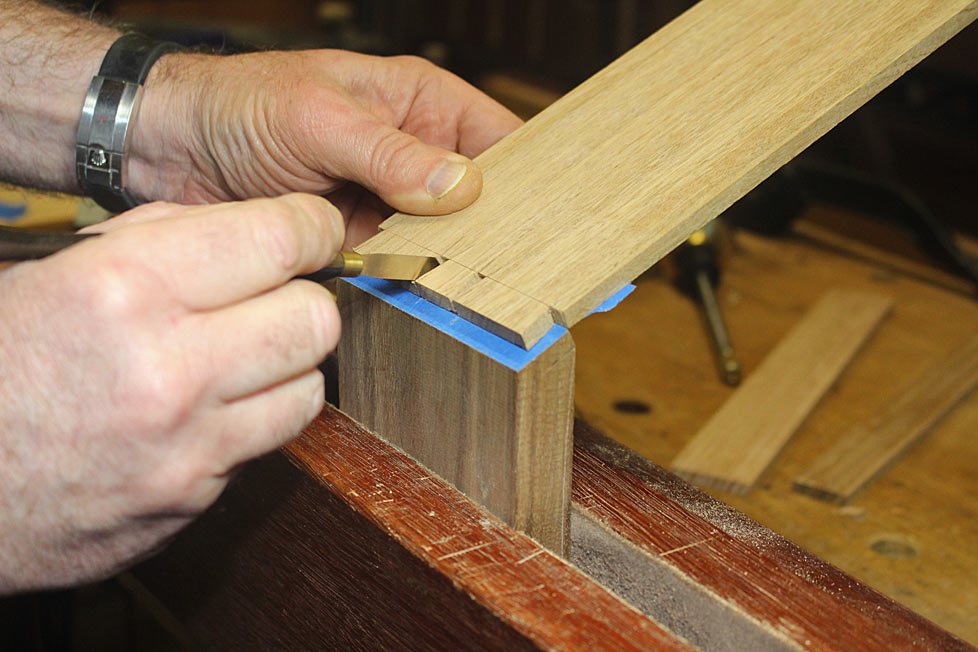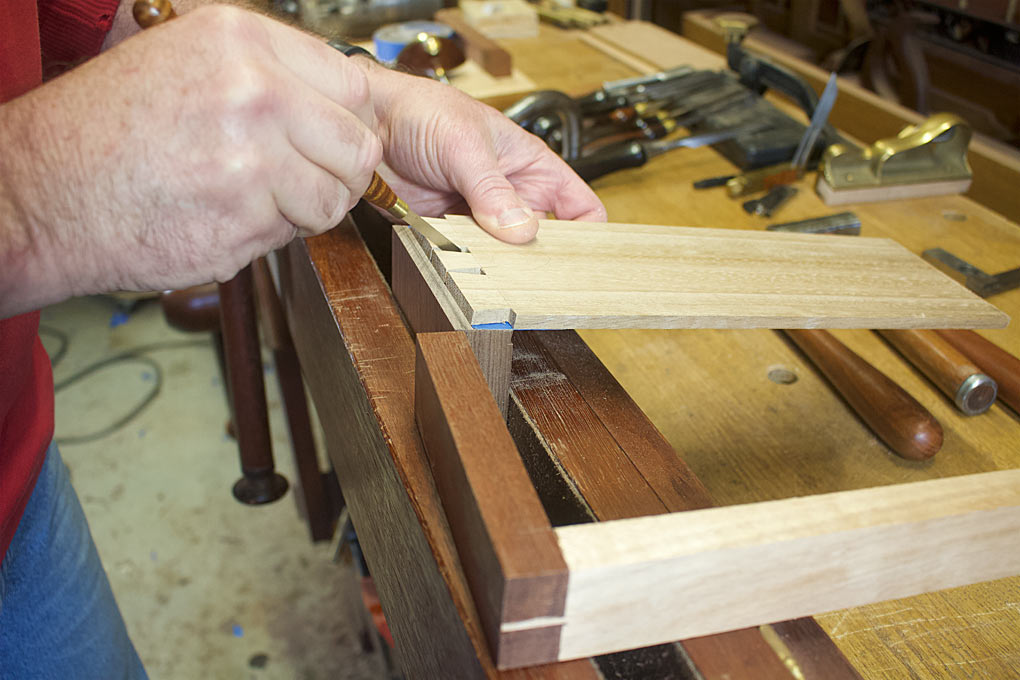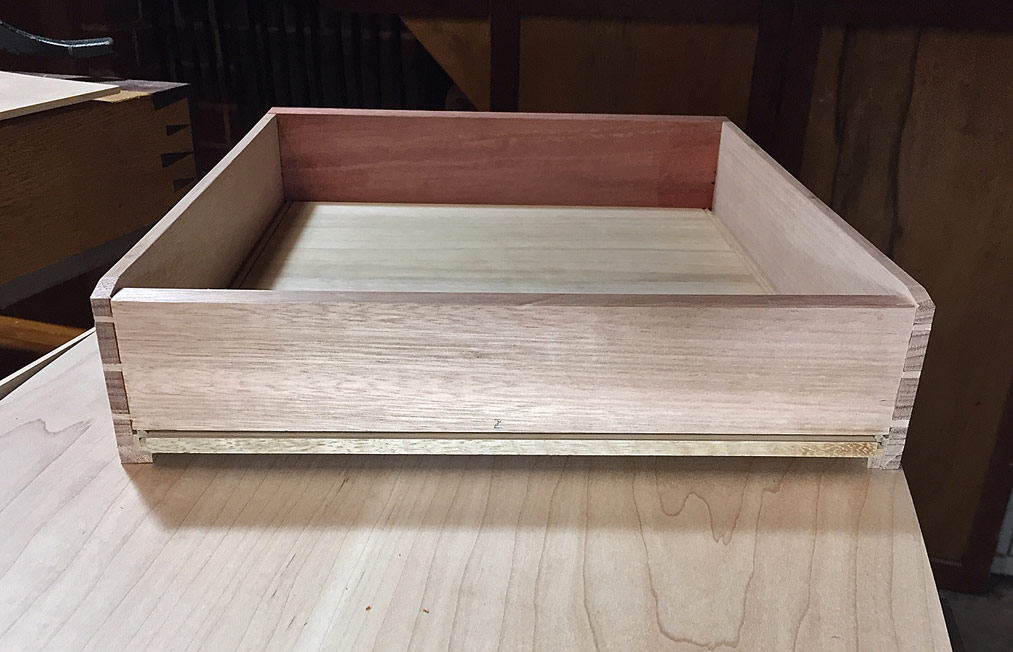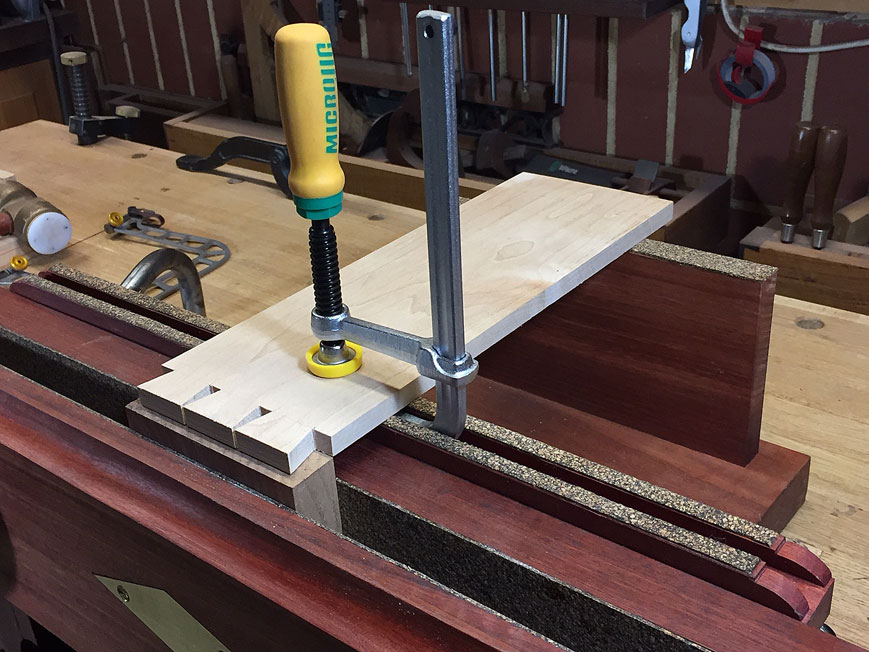derekcohen
Member
- Joined
- Jun 22, 2008
- Messages
- 1,016
For many, I view the David Barron alignment board to be very helpful. I do not use one, and likely never will, since I frequently make cabinets with bow fronts, and this requires drawers with compound angle dovetails …



Several years ago I came up with an alternative, which was to create a depth stop using tape: http://www.inthewoodshop.com/Furniture/The140TrickisDead.html

(A few years later, some a$$hole ripped this off word-for-word and sent it to FWW magazine as a Shop tip! Not long after this, Rob Cosman began using it, acknowledging that he was sent the tip).
David Barron’s board is designed to align sides, which is great for boxes - and what David does primarily (I don’t believe he builds furniture much, if at all). The issue here is that you cannot use the jig with offset drawer backs, which is standard practice with the drawers I build …



What I do like about the jig is that it forces one to raise the work piece above the chop. There are many who like to build a table behind the chop of a “Moxon” vise. Doing so will inevitably lead to the chop being cut up when you transfer markings. I recommend a spacer to raise the work above the chop, which is what David’s jig does. My spacer doubles as a clamp …

Go ahead an build David’s alignment board, but be aware that it is for boxes and not drawers.
Regards from Perth
Derek



Several years ago I came up with an alternative, which was to create a depth stop using tape: http://www.inthewoodshop.com/Furniture/The140TrickisDead.html

(A few years later, some a$$hole ripped this off word-for-word and sent it to FWW magazine as a Shop tip! Not long after this, Rob Cosman began using it, acknowledging that he was sent the tip).
David Barron’s board is designed to align sides, which is great for boxes - and what David does primarily (I don’t believe he builds furniture much, if at all). The issue here is that you cannot use the jig with offset drawer backs, which is standard practice with the drawers I build …



What I do like about the jig is that it forces one to raise the work piece above the chop. There are many who like to build a table behind the chop of a “Moxon” vise. Doing so will inevitably lead to the chop being cut up when you transfer markings. I recommend a spacer to raise the work above the chop, which is what David’s jig does. My spacer doubles as a clamp …

Go ahead an build David’s alignment board, but be aware that it is for boxes and not drawers.
Regards from Perth
Derek










